Email marketing is one of the most effective channels at your disposal, with an average ROI of $42 for every dollar spent. However, you can’t leverage email campaigns effectively if no one sees your emails.
It might seem obvious, but spam folders are a serious threat to the success of any marketing campaign.
To make sure your emails reach their intended audience and stay out of spam boxes, you need to monitor your “domain reputation.” That’s the score email service providers give to your domain in terms of trustworthiness. They use it to determine the validity of your emails.
Messages associated with a high reputation domain go into the inboxes of recipients. However, if you have a bad domain reputation, you’re cast into the spam folder, never to be seen or heard from again.
But how is domain reputation calculated? What can you do to monitor it? How can you ensure that your domain reputation is good? And what can you do to fix a bad domain reputation?
Answering those questions will be the purpose of this guide. With the information below, you’ll be able to monitor and optimize your domain reputation to boost all your email marketing efforts.
What Is Domain Reputation?
Your domain reputation is a score that determines how email systems decide what they’re going to let through to user inboxes.
Basically, your domain reputation is a measurement of the health and legitimacy of your domain. Your domain name is your web address. So “yourcompany” .com or .org or whatever you’re using would be your domain name.
Your emails typically come from that domain name, even if you separate your web hosting from your email services. The reputation associated with your web address is applied to all emails that come from it.
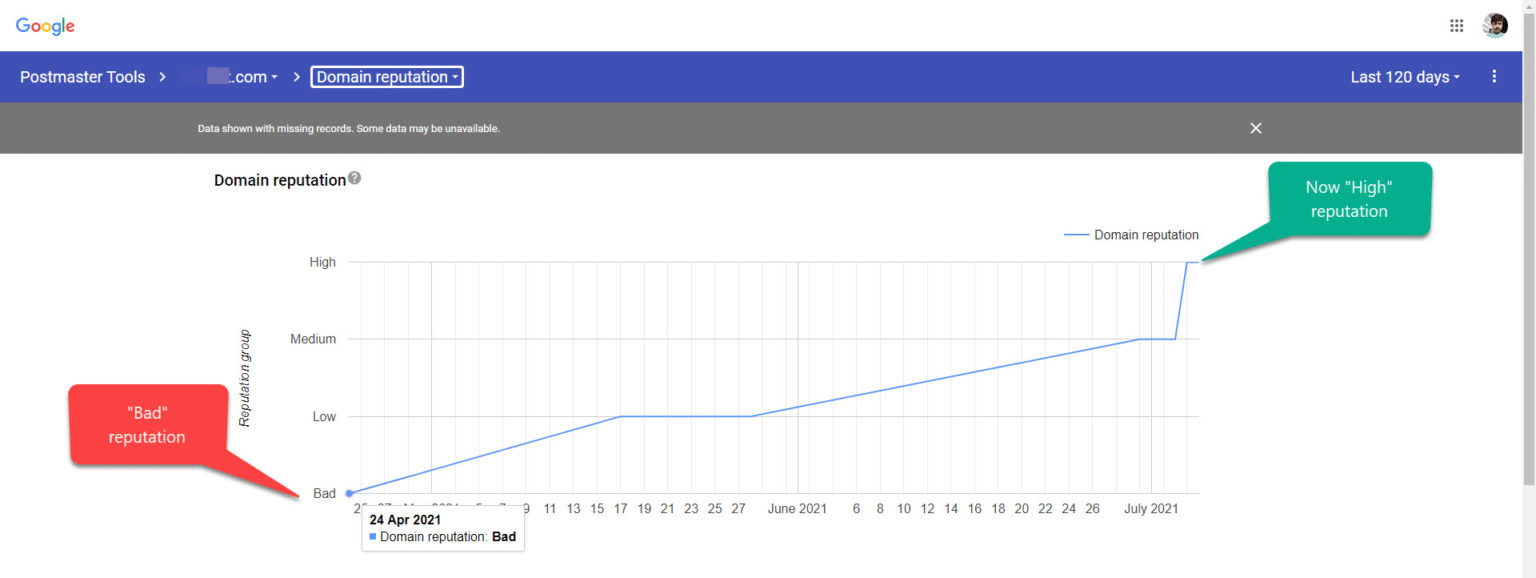
Domain reputation is determined by mailbox providers and internet service providers (ISPs), which means that you might have a different domain reputation for each email service provider. For instance, Gmail might assign you one domain reputation, but messages sent to Yahoo addresses are given a completely different score.
Understanding domain reputation, including how it’s calculated and how it can be improved, is absolutely vital for email marketing.
Why is this so important? When you have a poor domain reputation, the email campaigns you send will often go directly to spam folders, where no one will ever see them. That means you’re wasting time and money trying to blast out useless emails.
But if you have no idea that your domain reputation is bad, you likely wouldn’t understand why your emails are going to spam or why nobody is reading them. To that end, you’re going to have to sharpen your understanding of domain reputation, how you can measure it, and what you can do to raise your score and lift your messages out of the spam vortex.
Of course, domain reputation isn’t solely an email address issue. This score factors into all places where your domain is used. In addition to email addresses, this includes return path domains and DKIM signing domains. It also includes headers, brand assets, links, and any content included in the messages you’re sending.
How Is Domain Reputation Calculated?
Just understanding the concept of domain reputation isn’t enough to help you manage yours. You also need a strong understanding of how your domain reputation is calculated.
It’s a complicated topic since each email receiver assesses domain authority differently.
While they all have various criteria, not all of them are known. Some services keep their calculation factors a secret, so malicious spammers can’t game the systems.
While the various factors may differ, the one thing that remains constant is that the receiving platform determines how your domain is used in your email messages and then monitors how its users receive those messages.
All scores calculated for each message you send out work for or against you in the future when it’s time to send more messages.
That’s why every domain has multiple reputations associated with different email receivers. Those reputations are also dependent on the volume you’re sending to specific receivers.
For example, if you’re sending the bulk of your email blasts to Gmail users, Google will have a lot of information about your domain and how reputable it is. However, if you only have a few Hotmail subscribers, then that service won’t be able to get a complete gauge on you.
While these services judge you based on different criteria, there are a few common calculation factors that we can point to as a starting point.
Domain Reputation Calculation Factors
Domain reputation can be traced to a number of common calculation factors that different services use to determine where to place your emails when they come in.
The first factor on that list is whether or not your emails are being sent to spam traps. These are fake email addresses operated by blacklisting services for the purpose of weeding out spammers.
There are two different kinds of spam traps. Pristine spam traps are email addresses that have never been valid. These addresses have no way of actually opting into receiving email blasts. That means anyone sending emails to these addresses isn’t using best practices for email marketing.
Recycled spam traps were once valid email addresses that have been repurposed. While sending to recycled spam traps won’t hurt your reputation as bad as a pristine trap, they should still be avoided. That’s why it’s important to clean up your email marketing lists periodically.
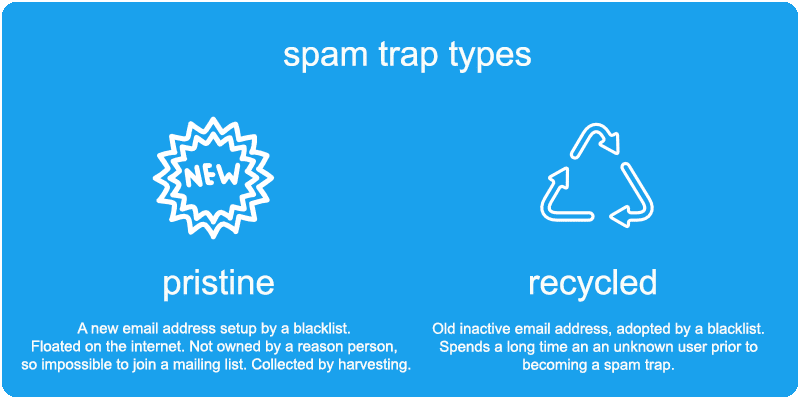
Email service providers also monitor blacklisting. A blacklist is a list kept by an email platform detailing spammers and malicious entities.
If you’ve been added to a receiver’s blacklist (perhaps for sending an email to a pristine spam trap), you’re going to be identified as spam immediately. Getting added to a blacklist can also occur when a large percentage of your recipients mark your messages as spam.
Then there’s engagement. This is a huge factor that’s monitored when determining domain reputation. When people don’t open your emails or unsubscribe from you en masse, it’s a huge red flag to email providers that could impact your domain reputation.
But this is another factor that differs based on the provider. If Gmail users are unsubscribing at a faster rate than MSN users, your Gmail reputation will be a lot lower.
Emailing practices are also monitored to determine the validity of a domain. While that might seem like a particularly broad term, it measures the frequency, relevancy, and timing of your emails.
The age of your domain is also a big ranking factor that determines your reputation. A new domain sending out a ton of emails will fall under suspicion. But an established older domain with years of positive reputation under its belt will see more leniency.
How To Establish Domain Reputation
If your domain is newer, you will have to be careful as you start out. Make sure you’re building a positive domain reputation right off the bat. You don’t want to start at a disadvantage because you made a silly mistake.
You should always avoid sending emails to people who haven’t specifically opted into your brand’s messaging. Many of these could be pristine spam traps, and you have a higher likelihood of getting reported as spam by people who never consented to receive your emails.
To make a good impression on email providers, you should establish a proper email cadence to control your volume and consistency.
If you’re sending multiple emails every day at random times, it will be suspicious. But establishing a regular cadence shows legitimacy and professionalism. A prospecting cadence that doesn’t only focus on emails can also appear less spammy to email providers.

It’s also important to be patient and avoid doing too much too soon. Remember, the age of your domain matters, so build up your email marketing slowly to build a positive reputation over time.
Ensure that you’re keeping your email list updated. If people are unsubscribing, you should ensure that you’re removing them. Not only is ignoring an unsubscribe request going to tarnish your domain reputation scores, but it could also land you in legal trouble, especially after GDPR and CCPA.
Finally, this might seem obvious, but don’t send spammy emails. Avoid writing in all caps and using spam trigger words in your subject line like:
- Act now
- Buy
- Call now
- Clearance
- Deal ending soon
- Limited time
- Special promotion
- Urgent
- Meet singles
- As seen on
It’s also important to constantly monitor your reputation over time. You should always know where you stand. That way, you can quickly adjust your approach to ensure you don’t end up blacklisted if there’s an issue. To that end, check your reputation regularly and change up your plans based on what you find.
How To Check Your Domain Reputation
You know that you have to check your domain reputation to successfully keep it positive. However, you may have no idea how to do that. Don’t worry — we’re going to walk you through how to check your domain reputation now before recommending several tools that can help.
There are a number of resources online that allow you to check your domain reputation and keep a consistent eye on it. Many of them are even free to use, which is always a plus when you’re already paying for email marketing software.
The most common domain reputation you can check is tracked by Google. That’s because so many email platforms keep their scores a secret to stop people from trying to take advantage. But getting your score from Google is definitely a plus since its email client, Gmail, is the world’s second-largest email client, with 27.8% of the market share.
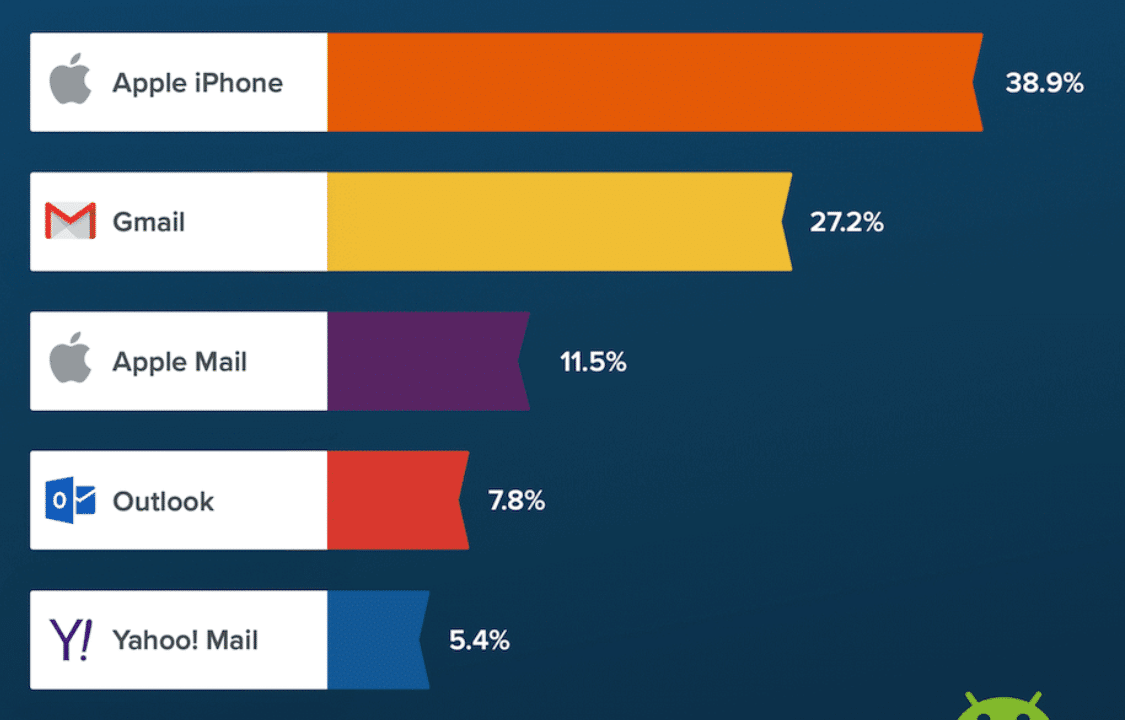
Some of the tools that monitor your domain reputation provide you with a grade that you can then track over time.
Top Domain Reputation Lookup Tools
To help you properly keep track of your domain reputation, we’ve compiled this list of the very best domain reputation tracking tools available. We will go over what they are, what they do, and what they cost.
1. Google Postmaster Tools
We mentioned before that it’s always a good idea to understand where you stand with Google. That’s why Google Postmaster Tools typically dominate the conversation whenever marketers talk about domain reputation software.

Since Google is such a huge email receiver, understanding how it grades your domain will go a long way toward forecasting the effectiveness of your email marketing. Google Postmaster Tools provide you with a reputation grade for Gmail as long as your volume is high enough to anonymize the data.
On top of your domain reputation, you can also check your:
- Delivery errors
- Encryption
- Spam rate
- Authentication
- Feedback loop
This is a 100% free service from Google, which is another reason why it’s so popular.
2. Talos Intelligence
Cisco created Talos Intelligence as a way to monitor your online reputation over a number of IPs.
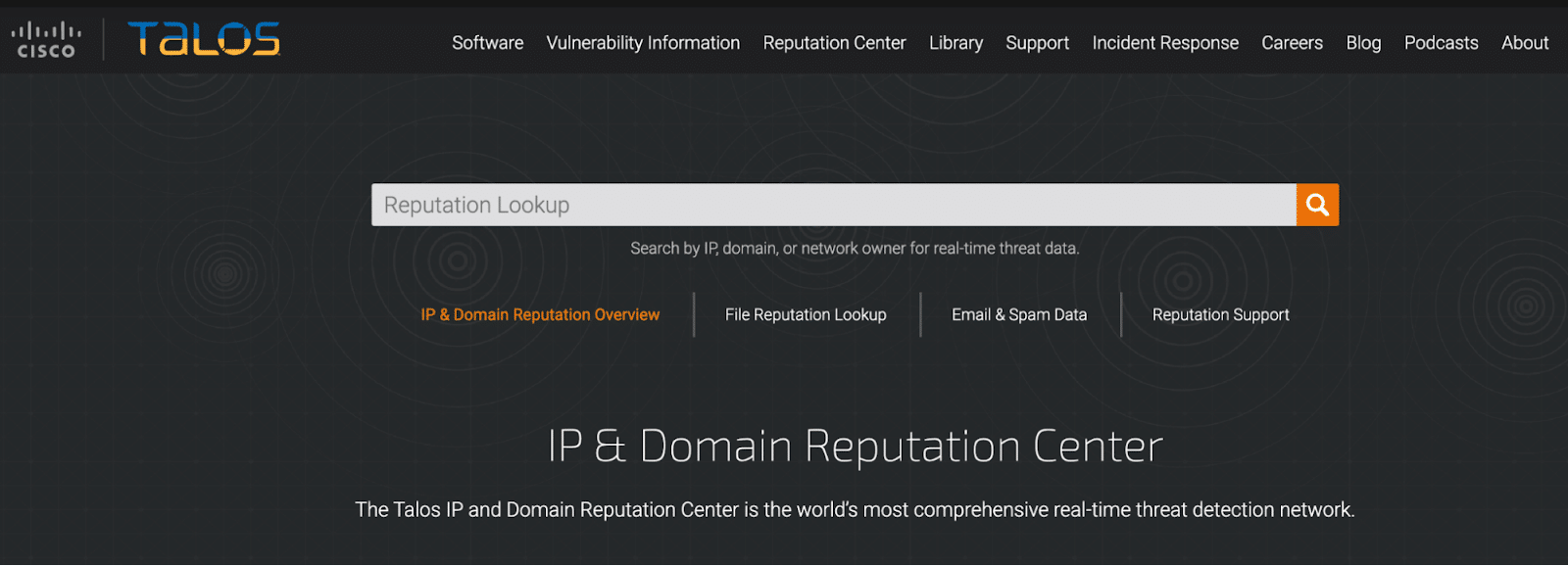
This makes it easy to spot problems of any major significance. If your results return a neutral reputation, that doesn’t mean you have a clean bill of health. This can often be a result of a low email volume, making it hard for Talos to assess your reputation.
If you want to check your reputation on Talos Intelligence, you’ll have to go to the IP & Domain Reputation Center, where you can paste your domain name into the taskbar and run a report.
Like Google Postmaster Tools, this service is free.
3. Sender Score
Sender Score was developed by Validity. It monitors your domain reputation in the same way that a credit monitoring company tracks your credit score. It also assigns you a score between 1–100, with higher scores being better. Anything under 70 is considered bad, and anything over 80 is considered great.
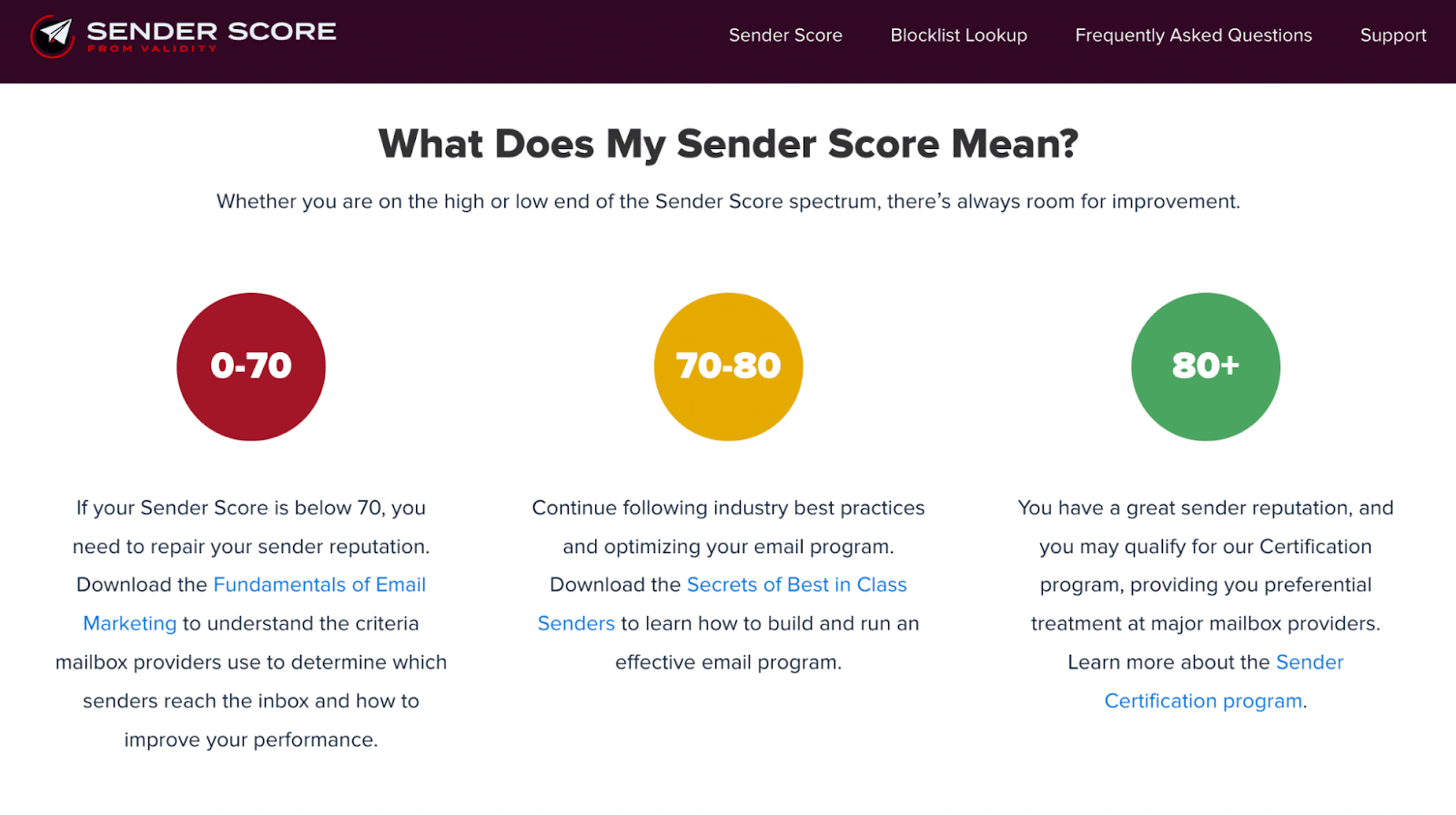
The score takes your reputation and email deliverability rate into account. This score is calculated based on a 30-day rolling average, comparing your score against other IP addresses.
Sender Score is free, but you’ll have to provide some information.
This includes:
- IP address
- Name
- Work email
- Company
- Monthly email send volume
- Number of employees
- Job function
- Country
4. TrustedSource
McAfee, one of the world’s most trusted names in internet security, has created a system called TrustedSource, which provides information on your domain’s reputation for both the web and email. It will also list any affiliations, mail server, and domain name system (DNS) information.
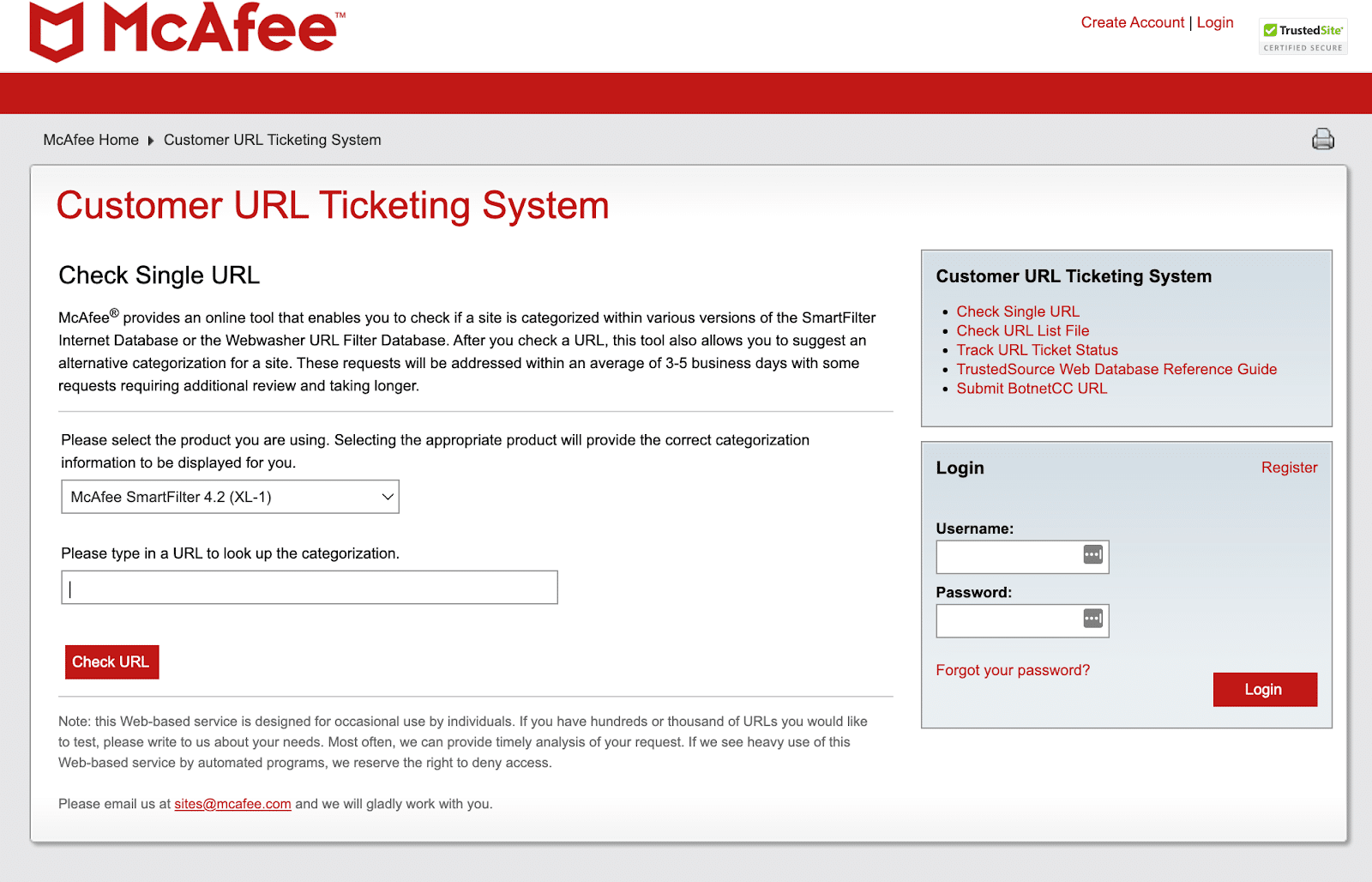
To use it, you simply select the McAfee tool from the dropdown menu and enter your domain in the provided box. The system then runs a report for you listing your URL, status, characterization, and reputation.
You can also add optional categorization suggestions below your results. McAfee notes that this service is made for occasional use by individuals and isn’t something that should be used to check “hundreds or thousands of URLs.”
The service is provided free of charge.
5. Barracuda Central
Barracuda Central is a tool that allows you to look up your IP address and determine whether it has been placed on any blocklists.
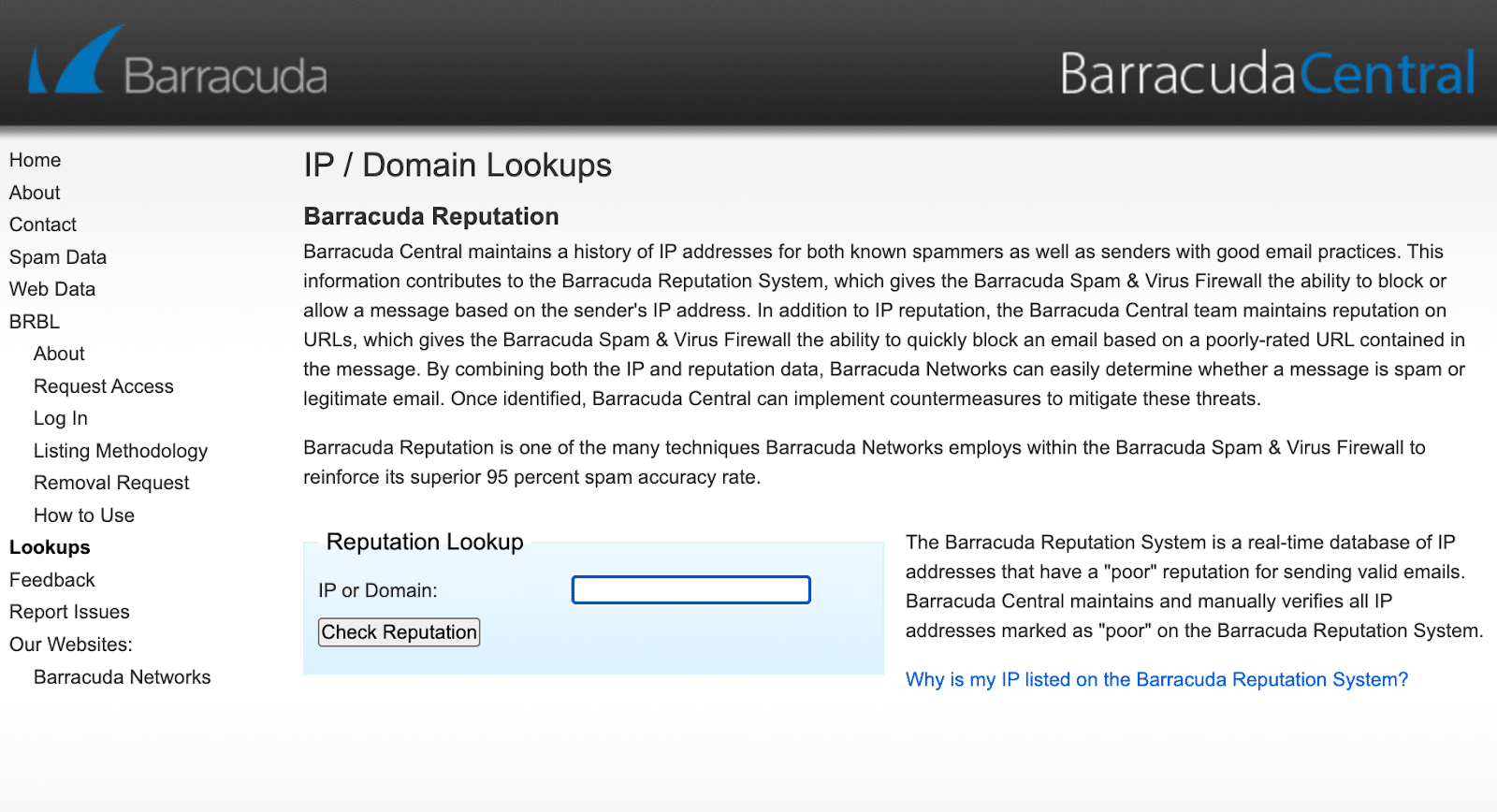
It does this by keeping a real-time database that shows whether your site’s reputation is good or poor.
Barracuda Central is another free tool. However, it doesn’t provide a numerical score like Sender Score does. It’s simply a pass or fail result.
6. Microsoft SNDS
SNDS is Microsoft’s answer to Google Postmaster Tools. SNDS stands for Smart Network Data Services, and it provides information on your domain reputation, including how many Microsoft spam traps you’re currently delivering to. It also lets you know your spam complaint rate, which is a measurement of how many people are marking your content as spam.

Just like Google measures your reputation through data from Gmail, Microsoft measures your reputation through its email service, Outlook. This, of course, doesn’t impact how other email providers see you, but knowing where you stand with both Google and Microsoft will go a long way toward painting a picture of your overall reputation.
If two of the biggest services in the world are suspicious of you, then you can bet that many of the others are as well.
When you log into SNDS, it will show you a table that lists any IPs you’re associated with that have an abnormal status. This is updated daily.
How To Improve Your Domain Reputation
Now that you know how to check your domain reputation, the question becomes, what should you do if you find out that your reputation is bad? You can’t just slap a trust badge on your site and convince these services that you’re on the up and up.
There are several steps you can take to improve your reputation going forward. While it’s never ideal to have to build yourself up from a disadvantage, it’s far from impossible.
Clean Up Your Subject Lines
Start out by taking a long hard look at the verbiage you’re using in the subject lines of your emails. Spammy buzz words like “deal” and “buy now” are big red flags for email service providers. And even if they do manage to get through, they raise suspicions for email users who might mark you as spam.
Regularly Purge Your Lists of Inactive Subscribers
You’ll also want to clean out your email lists regularly. If you notice addresses with no interaction whatsoever over a period of time, drop them from your list. It’s possible that these are spam traps, and you don’t want to keep falling into them.
Only Send Emails to Users Who Opted In
Make sure that you’re making subscribers opt-in to receive emails. This guarantees that everyone you’re sending to is a quality lead who actually wants to hear from you. It also all but eliminates the possibility of you falling for a pristine spam trap by sending unsolicited emails.
If you’re using a third-party email system like MailChimp, consider authenticating your domain and email so that the platform can send your messages on your behalf.
Summary
Email marketing can be hugely beneficial for your company. But if your email deliverability rate takes a hit from a poor domain reputation, you’re never going to experience those benefits.
There’s a lot that you can do to improve the security of your website, from running regular security checks to installing a WordPress security plugin. Unfortunately, the security of your site has nothing to do with your domain reputation. That can only be improved with solid email practices, patience, and careful monitoring using some of the tools listed on this page.
Thankfully, the tools we’ve listed are all available for free, which means that keeping track of your domain reputation will be a breeze.
